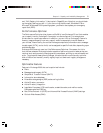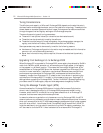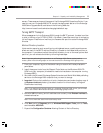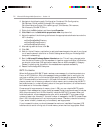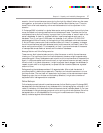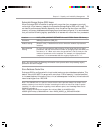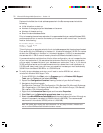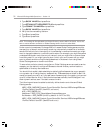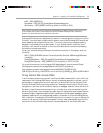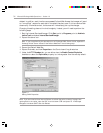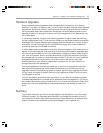
Chapter 2: Capacity and Availability Management 29
Extensible Storage Engine (ESE) Heaps
When Exchange 2000 is installed on servers with more than four processors, you might
notice high virtual memory usage by the Extensible Storage Engine (ESE) multi-heap. This
can lead to performance problems, especially when the server has more than one GB of
memory, and many databases and storage groups have been configured. It is recommended
that you add the following registry parameter to all servers with more than four processors:
Location: HKEY_LOCAL_MACHINE\SOFTWARE\Microsoft\ESE98\Global\OS\Memory
Parameter: MPHeap parallelism (REG_SZ)
Default setting: (Doesn’t exist) = Parallelism set to four times the number of processors
installed.
Recommended For up to four processors, take no action. If the server has four or more
setting: processors and has the maximum number of storage groups and MDBs, set
the value to “0.” When set to zero, the parallelism is set to three plus the
number of processors on the computer. For example, on eight-processor
computers, it is recommended that this registry key be set to “11.”
Note: You must restart the Exchange information store process after the preceding registry
parameter has been changed.
Store-Database Cache Size
Exchange 2000 is configured with a hard-coded maximum store-database cache size. This
default value is 900 MB. On servers with more than 2 GB of memory, it can be beneficial
to increase the size of this cache. Due to virtual address space limitations, this value should
never be set higher than 1200 MB.
Note: The 900-MB limit is in place to ensure that the store process always has ample virtual
address (memory) from which to allocate. Increasing this value too much can lead to system
instability. For more information regarding virtual address space, see Knowledge Base article
Q266096 available at:
http://support.microsoft.com/support/kb/articles/Q266/0/96.ASP?LN=EN-
US&SD=gn&FR=0&qry=Q266096&rnk=1&src=DHCS_MSPSS_gn_SRCH&SPR=MSALL



